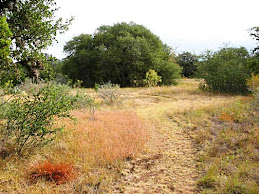



 I love the abstraction of flowers. The styles emerging from the anther tubes of this Skeleton Plant flower look as if they are involved in a dance. Lygodesmia texana gets its common name from the fact that the leaves are so small the plant has the appearance of being leafless. In my opinion, a terrible name for something so lovely.
I love the abstraction of flowers. The styles emerging from the anther tubes of this Skeleton Plant flower look as if they are involved in a dance. Lygodesmia texana gets its common name from the fact that the leaves are so small the plant has the appearance of being leafless. In my opinion, a terrible name for something so lovely.
 These flourish in our short grass prairie, where the Earth offers up a seemingly inhospitable terrain of limestone crushed by the waters of eons past. They tower above the rest and give a good showing after a rain. Their seed head is much like a dandelion, delivering its progeny to the wind. According to flower essence theory, this flower would be categorized as exhibiting the qualities of Air.
These flourish in our short grass prairie, where the Earth offers up a seemingly inhospitable terrain of limestone crushed by the waters of eons past. They tower above the rest and give a good showing after a rain. Their seed head is much like a dandelion, delivering its progeny to the wind. According to flower essence theory, this flower would be categorized as exhibiting the qualities of Air. Now it's not just the orioles and hummingbirds looking for a handout at my home office window. This little fellow peeking from behind my laptop had to hop over two large, obviously snoozing dogs to get my attention.
Now it's not just the orioles and hummingbirds looking for a handout at my home office window. This little fellow peeking from behind my laptop had to hop over two large, obviously snoozing dogs to get my attention. I've never seen a squirrel at my window before. They are usually content scampering around in the front yard trying to remember where in the lawn or among the potted plants they hid last year's crop of native pecans. I'm sure every one of our towering pecan trees owes its start to the forgetfulness of his ancestors.
I've never seen a squirrel at my window before. They are usually content scampering around in the front yard trying to remember where in the lawn or among the potted plants they hid last year's crop of native pecans. I'm sure every one of our towering pecan trees owes its start to the forgetfulness of his ancestors. 
Before they land, they sing a couple of bittersweet notes, followed by some squawky chatter that seems to tell the hummingbirds to clear the deck, they're coming in for a landing. Ka-thunk! I've learned his song, and can now find him wherever he is on the property. This morning he woke us up tapping on the feeder and scolding because the feeder was dry.
I don't want to admit I'm a birder. No, I'm just a botanist willing to get up early on a weekend morning to make sugar water.
The momma bird built and used it last year, then took off for the summer. A large wolf spider moved in. By fall, the spider was gone and the wren was back. She spent the winter sleeping in it, head first. It is right under our porch light, so we could see her breathing in slumber.
As the nights began to warm in early spring, she took to sleeping in the pecan tree. We were able to use her to forecast the occasional nightly freeze--on those nights she was back in the nest as soon as the setting sun hit the trees. How is it that Nature innately knows what we must build machines to tell us? Living in the country I have begun to relearn what people have forgotten by living in cities.
We knew she was setting eggs when she started sleeping with her head facing out. She gave us an inconvenienced look every time we passed in and out, so we tried not to make eye contact. Complete strangers at the door, however, would be surprised when she escaped within inches of their faces. That's pretty neat that she knows and trusts us.
